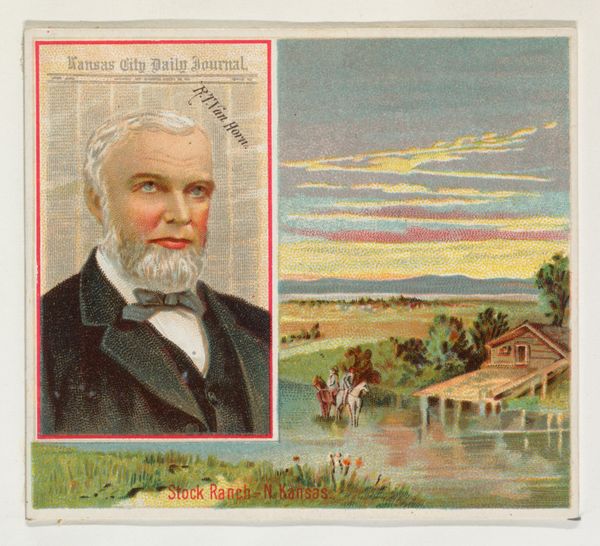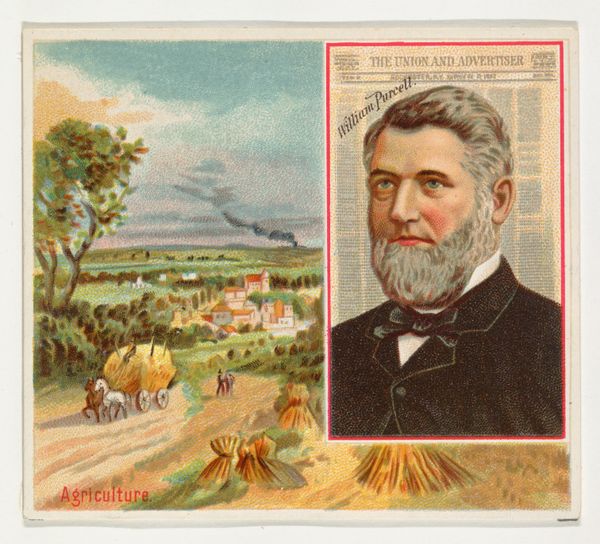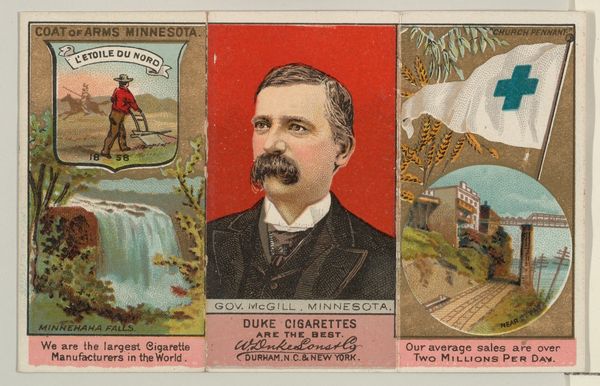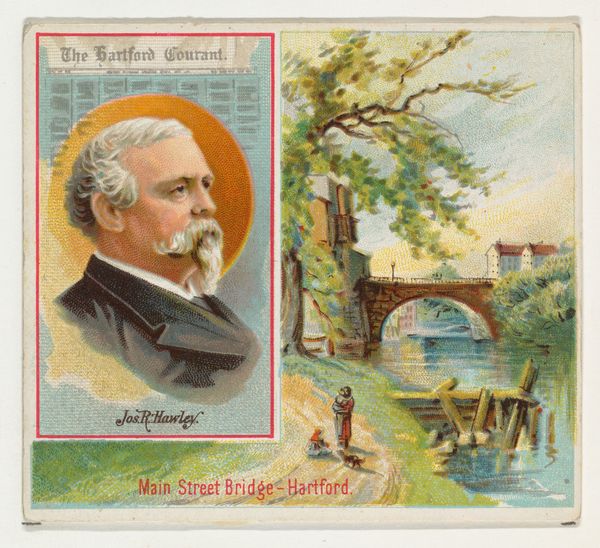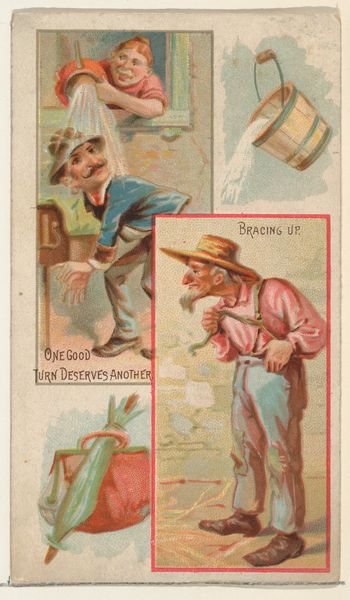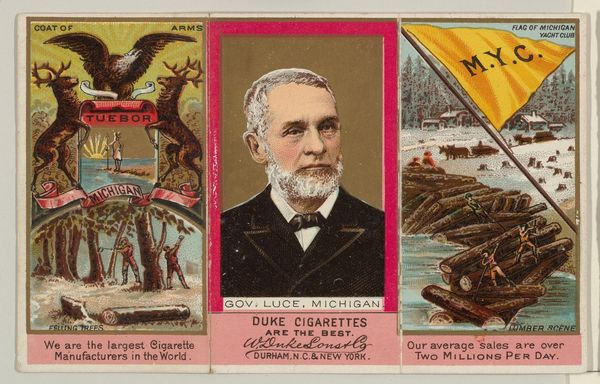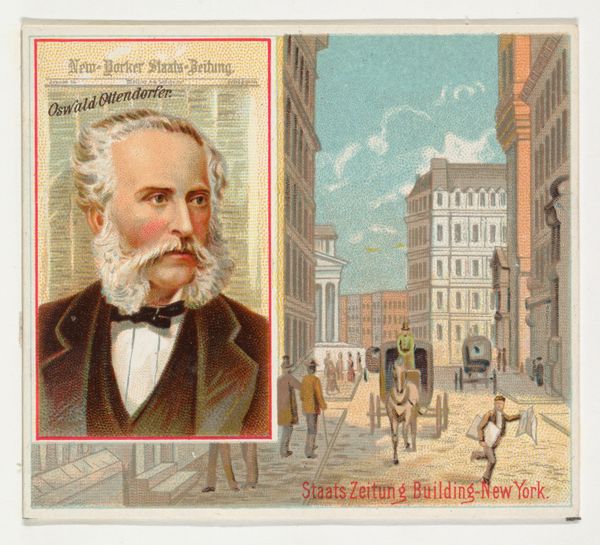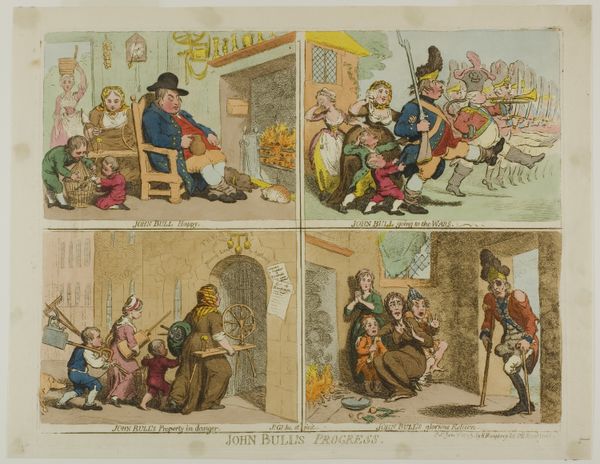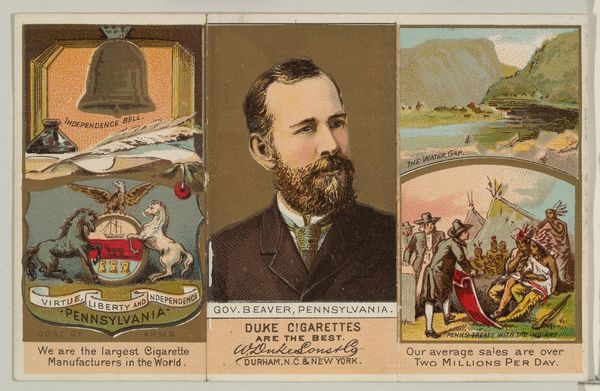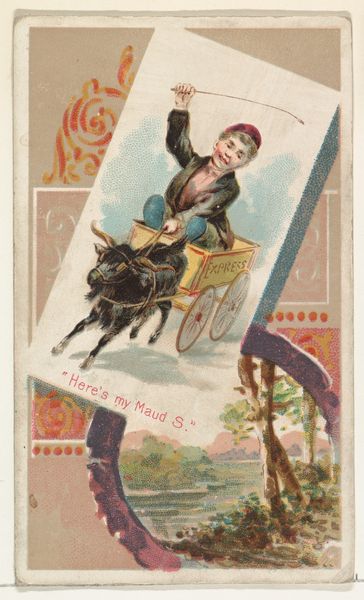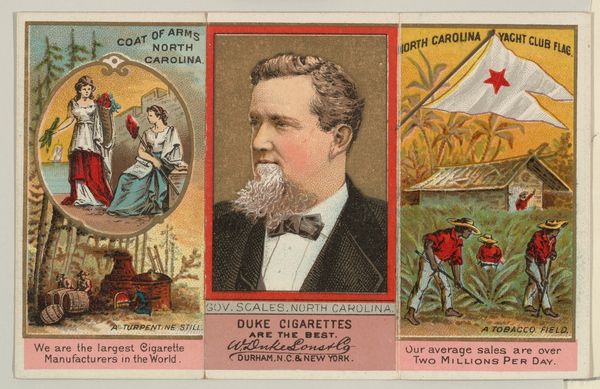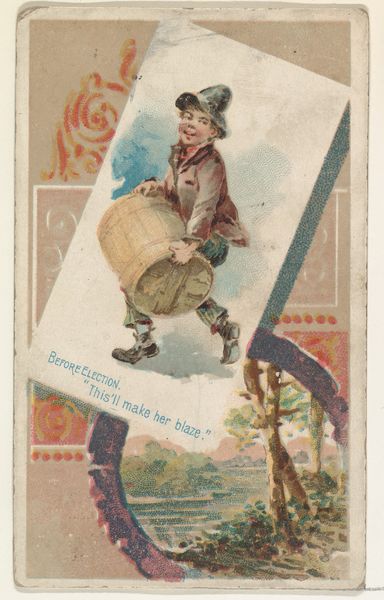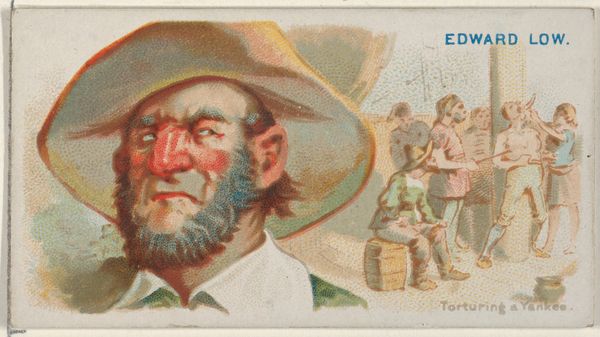
Albert R. Lamar, The Macon Telegraph, from the American Editors series (N35) for Allen & Ginter Cigarettes 1887
0:00
0:00
Dimensions: Sheet: 2 7/8 x 3 1/4 in. (7.3 x 8.3 cm)
Copyright: Public Domain
Curator: Here we have "Albert R. Lamar, The Macon Telegraph," a print from 1887 created by Allen & Ginter as part of their "American Editors" series. Editor: Wow, a tobacco card? I am immediately struck by the contrasting scenes—almost like a split-screen effect. The portrait has this sort of distinguished calm, next to vignettes of cotton being picked. The idyllic, yet gritty labor beneath his calm profile... uneasy doesn't even cover it. Curator: It is quite a striking juxtaposition. These cards were inserts in cigarette packs, aimed at broadening the brand's appeal. Placing Lamar, the editor, next to the industry he profits from offers some commentary. It visually links his success to cotton production. Editor: Definitely. The way "The Plant-The Bloom" is labeled, with that Southern agrarian romanticism is laid out beneath Lamar's portrait... while the scenes of production that also appear in this card are of a scene filled with enslavement, debt and poverty! Curator: Precisely. We see a complicated interplay between media, representation, and economic realities. These tobacco cards functioned as a sort of popular press themselves, circulating images and ideas broadly. Editor: So it makes you wonder about the editor’s role. Was he reinforcing or challenging existing power structures? These cigarette cards were extremely common during this period. Do you think people took the time to ponder what these juxtaposed images of portraits alongside workers communicated back then, or were they merely collected like baseball cards are now? Curator: Great question! It’s difficult to know exactly how they were perceived, though contemporary sources suggest a general awareness of their promotional intent, and some discourse existed around issues surrounding the cigarette trade. But even simply collecting them, in some sense, internalizes these narratives. The portrait series presented idealized images of success alongside the fruits—literally—of exploited labor. Editor: A potent reminder that even seemingly innocuous imagery can be loaded with historical baggage. Now when I think of those vintage cigarette packs, I'll always picture this card first. Curator: And, hopefully, think critically about the stories these everyday images tell us about the past and present.
Comments
No comments
Be the first to comment and join the conversation on the ultimate creative platform.
